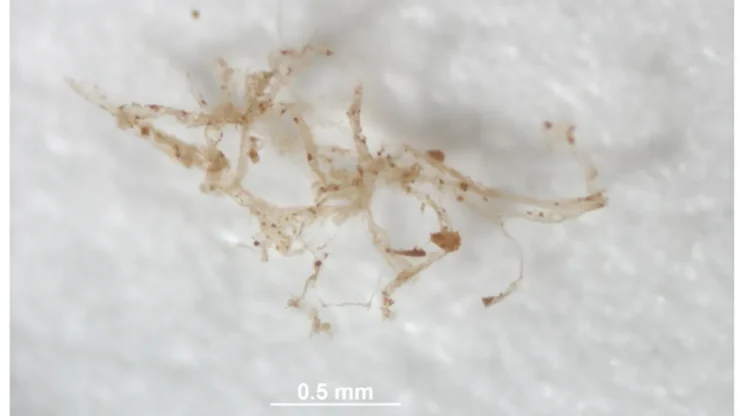Although while finding fossilized dinosaur bones is amazing, it’s even more amazing when researchers find evidence of soft tissue that has miraculously survived to the present day.
Brachylophosaurus canadensis, a 9-meter (30-foot) tall herbivore with a duck-like beak that stomped around in the Late Cretaceous, is a fossil that dates back 80 million years. Researchers from North Carolina State University identified blood vessel-like features in this fossil.
They succeeded in demonstrating in their investigation that these structures are very probably the remains of real blood arteries that previously carried blood throughout a dinosaur, rather than just biofilm left behind from invasive bacteria or any other pollutants.
They achieved this by analyzing the samples with high-resolution mass spectrometry, which was able to detect various proteins, including myosin, that are present in the cells of the blood vessels.
According to the reports of IFL Science, the blood veins are still in extraordinary condition, millions of millions of years after their last blood flow. The structures are transparent and slightly pliable to the touch, yet they still have the form that you’d anticipate an animal vein bundle to have.
The discovery was especially noteworthy since it strengthened the growing body of data showing that organic structures like blood vessels and cells may endure for millions of years without becoming fossilized.
“This study is the first direct analysis of blood vessels from an extinct organism, and provides us with an opportunity to understand what kinds of proteins and tissues can persist and how they change during fossilization,” said Tim Cleland who is study author and molecular paleontologist at the University of Texas at Austin.
“This will provide new avenues for pursuing questions regarding the evolutionary relationships of extinct organisms, and will identify significant protein modifications and when they might have arisen in these lineages,” he added.
Not all soft tissues that scientists have been able to get are blood arteries from dinosaurs. Surprisingly frequently, the skin of “mummified dinosaur” is discovered.
The true promise rests in their capacity to reveal some intriguing insights into the origins of proteins and how they aid in animals’ acclimatization to their environments, even though all of this may seem a little Jurassic Park-esque.
“Part of the value of this research is that it gives us insight into how proteins can modify and change over 80 million years. It tells us not only about how tissues preserve over time, but gives us the possibility of looking at how these animals adapted to their environment while they were alive,” added Mary Schweitzer, a molecular paleontologist at NC State and co-author of the paper describing the research.
Cover Photo: Blood vessels of Brachylophosaurus canadensis. Credit: M. Schweitzer, NC State University
